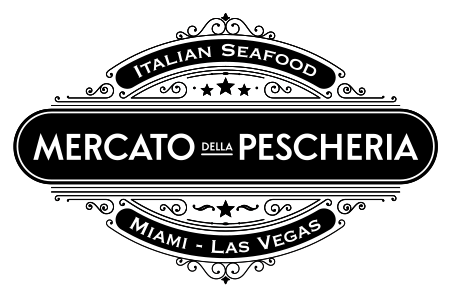When it comes to white wine, many people immediately think of Chardonnay or Sauvignon Blanc. But along the sun-soaked coasts of Italy, a lesser-known gem shines: Vermentino. This bright, aromatic white wine is capturing the attention of wine lovers worldwide with its freshness, complexity, and natural pairing with food. If you’re curious about what makes Vermentino so special, you’ve come to the right place.
A wine born from the sea
Vermentino is a white grape variety primarily grown in Italy, particularly in coastal regions such as Sardinia, Liguria, and Tuscany. While its origins are still debated—some believe it may have originated in Spain or the Middle East—today, it’s a proud staple of Italian viticulture.
What sets Vermentino apart is its deep connection to the sea. Grown on sunlit hillsides sloping toward the Mediterranean, the grape thrives in mineral-rich soils and benefits from salty sea breezes. These coastal conditions impart Vermentino’s signature crispness and subtle saline quality, offering a taste of the seaside with every sip.
What does Vermentino taste like?
Vermentino is celebrated for its light-to-medium body, zesty acidity, and refreshing character. You might catch aromas of white flowers, green apple, citrus peel, and fresh herbs like thyme or sage when you smell it. The palate often delivers flavors of pear, lemon, almond, and sometimes a hint of tropical fruit. Many Vermentino wines finish with a gentle bitterness similar to grapefruit peel, which adds complexity and makes the wine more interesting.
Unlike oaked Chardonnays or bold Viogniers, Vermentino is usually not aged in barrels, allowing its natural aromas and flavors to shine. It’s a clean, expressive wine that’s perfect for those who enjoy crisp, vibrant wines.
What to eat with Vermentino
Vermentino is a food-friendly wine, making it an excellent choice to pair with a variety of dishes. Thanks to its acidity and brightness, it pairs particularly well with seafood. Consider clams, mussels, shrimp, and grilled fish. Its herbal and citrus notes also pair well with pasta dishes featuring lemon or basil, light risottos, and antipasti with olives, artichokes, or marinated vegetables.
Fresh cheeses like ricotta, burrata, and mozzarella pair beautifully with Vermentino, as do salads with citrus-based dressings. The wine’s clean finish ensures that it never overwhelms a dish, but rather complements its flavors, enhancing the overall dining experience.
How does Vermentino compare to other white wines?
If you like Sauvignon Blanc, you may enjoy Vermentino as an alternative. It’s less grassy and more floral, with a rounder texture. Compared to Pinot Grigio, Vermentino usually has a richer mouthfeel and more aromatic complexity. It’s not as creamy or full-bodied as Chardonnay, making it a great option for those seeking something lighter yet nuanced.
Vermentino’s character is distinctly Mediterranean, offering a refreshing, layered profile that’s easy to love. It’s a wine that evokes sunshine, salt air, and leisurely outdoor meals.
Enjoy Vermentino at Mercato della Pescheria
At Mercato della Pescheria, Vermentino is more than just a wine on the menu; it embodies the restaurant’s coastal Italian philosophy. This elegant dining destination brings the flavors of the Mediterranean to life with handcrafted dishes that feature seafood, fresh vegetables, and artisanal ingredients. With Vermentino on the wine list, guests can experience coastal Italy in their glass and on their plate. Whether enjoying a glass of Vermentino with seafood crudo or a citrus salad, the harmony between food and wine is unmistakable. It’s a reminder that the best meals are those where wine and cuisine work in perfect harmony.
Ready to enjoy authentic Italian cuisine? Reserve your table at Mercato Della Pescheria in Miami here or Las Vegas here and taste the flavors of Italy!
How to serve Vermentino the right way
For the best experience, serve Vermentino chilled—ideally between 45°F and 50°F. This temperature brings out its aromatic freshness and allows its acidity to shine. Use a white wine glass with a narrow bowl to concentrate its delicate floral and citrus notes. Most Vermentino wines are meant to be enjoyed young, within a couple years of bottling. However, some high-quality versions can develop more complexity with a bit of aging.
Sustainable roots and simple winemaking
Many Vermentino producers embrace sustainable and traditional farming practices. Since the grape thrives in its native environment, it typically requires minimal intervention. This allows for a purer expression of terroir, or the unique influence of soil, climate, and geography on the wine. Winemakers typically favor stainless steel fermentation to preserve the wine’s freshness and crisp character.
This clean approach aligns with the growing trend of producing more natural, food-friendly wines. Vermentino isn’t just delicious; it also reflects a commitment to balance and authenticity.
Why you should be drinking Vermentino
If you’re looking for a white wine that’s both refreshing and flavorful, familiar and distinctive, Vermentino deserves a place on your table. It’s a versatile wine that pairs well with a variety of dishes and has an elegant structure that transports you to the Italian coast.
Whether you’re hosting a summer dinner, relaxing on a patio, or enjoying a seafood meal at a restaurant like Mercato della Pescheria, Vermentino adds brightness and sophistication without being overly fussy. It’s approachable for novices and layered enough for enthusiasts.
A coastal classic in every glass
Vermentino is more than just a white wine—it’s an expression of place, tradition, and simplicity. With its vibrant acidity, subtle minerality, and evocative aromas, it captures the essence of Mediterranean life in a bottle. Once you try it, don’t be surprised if it becomes your go-to choice for warm days, seafood dinners, and any occasion that calls for something refreshing and refined.
So, the next time you’re scanning a wine list or browsing the shelves, look for Vermentino. You’ll discover a coastal classic well worth exploring, one glass at a time.
